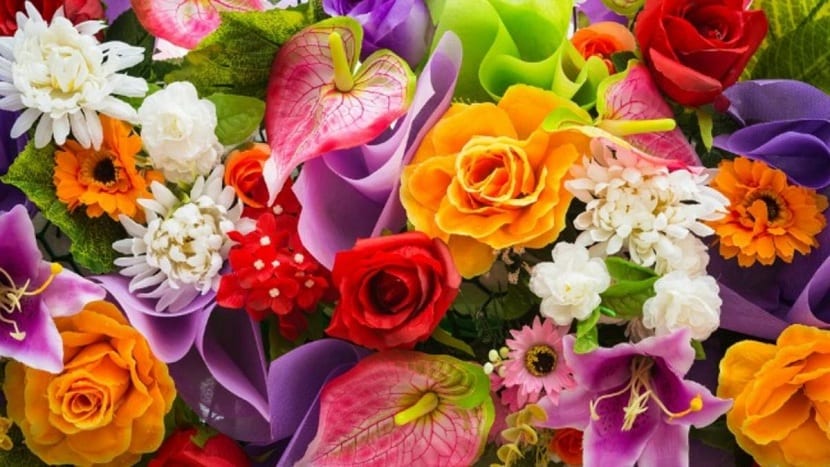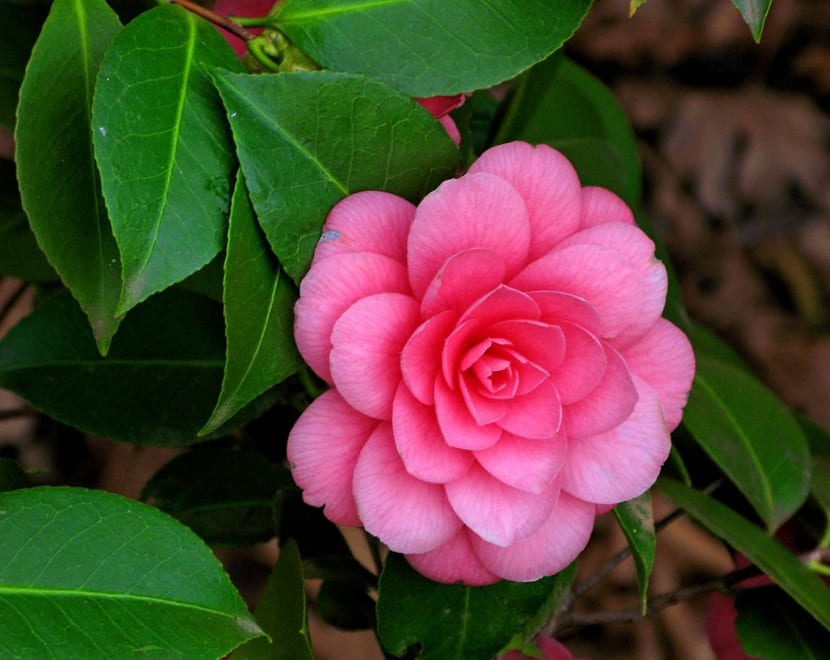
A good colorful and showy flowers can decorate your home giving it a more elegant and striking touch. Both for indoors and in the garden, there are numerous flowers whose care is not very complex and that they will perfectly fulfill the decoration function.
Here we are going to show you some of the prettier flowers and some basic care you may have. Do you want to know what flowers to choose for your home?
Azalea (Rhododendron Simsii)

The azalea is a plant-shrub with great beauty in its bell-shaped flowers. Thanks to its color, it can be used to make your home more attractive. It has a fairly simple care and you just have to follow some tips.
Its flowers bloom in summer and this is when this plant requires a little more care. They need plenty of water and frequent watering so that they can flourish properly. When watering we must avoid wetting the flowers or leaves, we must water directly on the ground. During the flowering stage it is important to always keep the azalea moist. To do this, we can cover the soil where the azalea is planted with some plastic and thus help with moisture retention. To water them the most optimal is to use rainwater.
Regarding its placement, the azalea requires a well ventilated and illuminated place where it does not receive direct sunlight, since the flowers could be weakened. To keep them in their best condition, the best option is to place them in places with semi-shade and about 22 degrees maximum.
If we want to keep it clean we can carry out two prunings a year. One will be done in winter and in it the parts that are dry or dead will be removed to help its correct growth. The second pruning will be the flowering one. This pruning consists of cutting out the different plants to stop growth and thus the plant will acquire a more branched and compact shape.
Begonias (Begonia dichotoma Jacquin)

This plant stands out for its flowers, but also for its foliage: its leaves are, in general, oval and fleshy, and some species even have a certain succulence in their stems and leaves, that is, the ability to store water and moisture in those parts.
Begonia needs a light soil rich in humus. The most convenient is a mixture of peat, bark and sand. You must keep the substrate always humid, not flooded, since its biggest problem is that the stems rot due to excess watering. To prevent it, it is better to water the plant always below, that is, putting the pot on a saucer with water for a while and then removing the water.
Regarding the place, you have to ensure that the plant is in a place with good light but protected by a light shade, since, if the sun hits its tissues directly, it will most likely burn them. The most optimal temperature is between 18 and 26 degrees. It is also advisable to protect the plant from drafts.
Bromeliads (Aechmea or Bromelia fasciata)

These plants can be found on the market in numerous varieties, so it has greater versatility when combining colors with other flowers in your home. Although there are many varieties, belonging to the same genus, all require very similar care.
These plants tolerate little light, so they are perfect for decorating interiors as well, although if we want it to grow as beautiful as possible, it is important to place it in direct sunlight, at least for an hour a day.
The temperatures that these flowers withstand are those of warmer or more temperate climates. They are not able to withstand very low temperatures well. What you do have to be quite careful with is watering. Bromeliads are plants that they don't need a lot of water, so the pot should not be flooded at any time. It is only watered when the soil dries up completely and does not allow itself to be flooded.
Camellias (Camellia japonica)

These plants are considered the most beautiful flowering shrubs. Although they do not have a very noticeable flowering in the autumn and spring times, if you care correctly, you can improve their growth and increase their beauty.
It is not a plant that requires a lot of care. You just need to pay a little more attention to watering. It has to avoid water stagnation at the roots so that it does not drown them and end up rotting. It is only important to keep the soil somewhat moist.
Camellias can be kept in the same pot for several years, but must be changed after that time so that they can continue to grow properly. When transplant a larger planter will be provided.
As for care related to pruning, camellias do not require pruning, but if you want to better balance the branches or reduce them, you can prune when they finish their flowering stage.
Carnations (Dianthus caryophyllus)

Carnations offer us beautiful flowers throughout the year and quite characteristic. They are easy to maintain. Its flowering takes place between the months of May to September. If you want to plant carnations, it must be in the fall or spring season.
To give it maintenance care it is important cut the flowers that have withered as they appear, as this will help stimulate the growth of new flowers. They do not need regular watering, since they are capable of withstanding for years without the need for much care. However, when carnations are newly planted, they should be watered regularly to help promote rooting of the plant.
As for the place, they prefer sunny places with good ventilation.
Chrysanthemums (Chrysanthemum)

Although this plant is famous for decorating graves in cemeteries, they can also decorate your home by giving it a good color. There is a great variety of chrysanthemums of many colors such as pink, red, orange, yellow or white.
One of the advantages that chrysanthemums offer is that they are late blooming. Doesn't bloom until November, so it helps us so that our garden is stained with color when the rest of the flowers begin to disappear.
Chrysanthemums are poorly cared for. One of them is to water them regularly if it does not rain and remove the flowers that are wilting as they appear. To water them properly, it is enough to have the earth always wet. Do not wet its foliage to avoid the appearance of diseases such as rust or mold.
Gardenias (Gardenia jasminoides)

The gardenia is a plant that is used for the interior and that has white and fleshy leaves that make it one of the most beautiful plants. Not only stands out for its view, but also for its intoxicating smell.
These plants can reach a large size, having flowers of 10 cm in diameter.
To properly care for gardenia, it is required in places where there is no direct light and protect them from the cold when temperatures drop in winter. To water it, this plant is somewhat delicate, since if it is watered too much, it will wilt. It is enough to leave them in an environment whose humidity is somewhat higher.
If you have guests and want to impress them with the scent of gardenia, you can cut the leaves and put them in a vase. In this way it will give off a more intense smell.
Gerberas (gerbera jamesonii)

These plants are best for indoors and are widely used for bouquets. For these plants to flourish correctly they need a good mulch and be transplanted every two years in the spring time.
The roots of this plant they do not tolerate excess water well, so when giving away we must avoid flooding it. It is important to pierce the bottom of the pot so that it has good breathability and aeration. The ideal temperature for gerberas is between 18 and 24 degrees. It should never be less than 13 degrees. For this, it is good to place them where there is good light, but not direct from the sun.
The irrigation they require is moderate, but regular. In spring and summer the soil must be kept moist and with a good flow of water. However, in the fall and winter season, wait until the soil is dry before watering it again.
Geraniums (Geranium)

Geraniums are known for their large blooms. They cannot be missing in any garden that wants to be attractive. Geraniums are "steel" plants, that is, neither sick nor proliferate and they can withstand colder winters.
To plant them, you must wait until the months of March and April in the regions with temperate climates. Geraniums do not require pruning, just remove faded flowers as soon as they appear. Yellow leaves are common on geraniums, but you should remove them as they appear. If there are a lot of yellowish flowers, it means that you are watering it with too much water. Normally, it is expected that the soil is dry to be watered again.
With this selection of flowers you can decorate your garden and even your interior in an elegant, colorful way and give a more beautiful touch to your home.